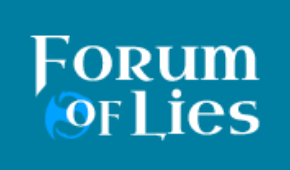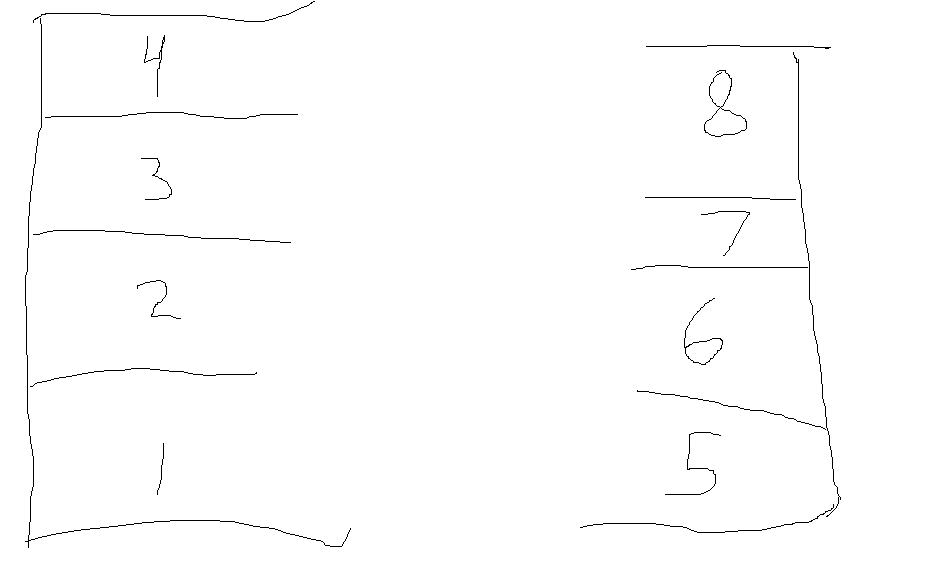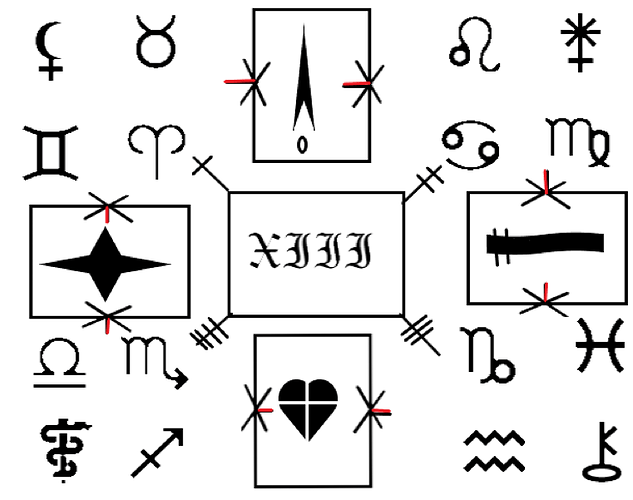Building E
Rooms:
Reception
Hospital Ward
Experiment Room
Observatory
I forget if we have any puzzles for these rooms, if we do I can add them in
Reception
The Reception room is ringed with sixteen plastic chairs, with six chairs on the wall opposite the door to the outside and ten chairs on the wall with no doors. There are three coffee tables surrounding the rows of chairs; each coffee table has a lamp that seems to shine despite no external power source. Near the wall connected to the rest of the building, there is a reception desk. The walls have several motivational posters attached, with messages like “Hang in there!”
Public objects: chairs, coffee tables, desk, posters
If the lamps are inspected, it can be determined that they don’t have a cord, and don’t produce heat.
If the underside of the coffee table between the two rows of chairs is searched, a wooden stake can be found.
A search of the chairs reveals nothing unusual except that one of the chairs has a broken leg. If someone tries to sit on the broken chair, it will break further.
The reception desk has a circular glass mirror, as well as a coffee cup filled with miscellaneous types of pens and pencils.
Hospital Ward
The hospital ward contains eight different bed areas, divided from each other by thick white curtains. Each area has a bed covered in a white blanket, as well as a shelf area. In the back of the room, there is a rack of hospital gowns.
Public items: beds, blankets, hospital gowns [NOTE: the gowns come on metal hangers, which can be used as weapons], shelving, dividing curtains
(not to scale)
Room 1
The shelving unit in room 1 contains a bottle of pills with a label saying IBUPROFEN. As suggested by the label, they are in fact Ibuprofen. They’re basically useless, it’s really hard to OD on Ibuprofin.
Room 2
The shelving unit in room 2 contains a medical chart. The chart reads:
Patient appears to have tendonitis in the elbow as a result of repeated stresses leading to inflammation. Recommend that they reduce draw weight in the future so as to limit this stress.
(this is a soft-clear on the Archer)
The shelving unit in room 3 has a vial containing a clear liquid; it can be identified with an Int% chance roll, or automatically by the toxicologist. The liquid is a poison that kills after 24 hours; symptoms first appear after 16 hours, and after 23 hours the victim becomes unable to move (though if an antidote is force-fed to them they will be able to swallow it),
The shelving unit in room 4 is empty. However, searching underneath the blankets finds a crossbow (with no bolts)
The shelving unit in room 5 contains a straitjacket.
The shelving unit in room 6 contains an empty syringe.
The shelving unit in room 7 contains a bottle of pills. Each pill, if consumed, knocks the person who consumed it unconscious for 1 hour.
The shelving unit in room 8 contains a box of Legos and instructions for how to assemble them into a Lego Parisian Restaurant.
Experiment Room
The experiment room has four lab tables, each of which has a built-in sink and a cabinet underneath. Additionally, there are four cabinets full of different equipment. Each of the tables and cabinets is labelled with a number 1-4.
There is a discarded crossbow on the floor.
Each lab table, when searched, contains a manual balance with several different weights, a 100 mL volumetric flask, a 50 mL graduated cylinder, an evaporating dish, and four beakers of various sizes.
Lab Table 1 additionally contains a case of vials of different kinds of ink (taken by TL). The ink comes in six different colors: red, orange, yellow, green, blue, and purple. Each type of ink has different properties, which can only be determined experimentally.
Red ink: The ink glows as if it were a candle for the next hour after applied.
Orange ink: The ink causes anyone reading it besides the original writer to experience blinding pain, which gives murder attempts against them for the next hour a +20% chance to succeed.
Yellow ink: The ink quickly fades to transparency. It can only be revealed by saying the word “reveal” out loud (when writing a message in the ink, you feel an overwhelming compulsion to say the word “reveal”).
Green ink: If applied to skin, the ink heals minor injuries.
Blue ink: Regardless of what one attempts to write, all words written with this ink will become the word “Repeated.”
Purple ink: When a message written in this ink is read by someone other than the writer, the paper the message is on will catch fire.
Lab table 2: In addition to the normal lab equipment, it contains several different types of dead plants. These can be combined in various ways to be determined to create different forms of potions.
Lab table 3: In addition to the normal lab equipment, it also contains a buret (taken by Trochi, smashed slightly) and a pH meter (taken by Derps).
Lab table 4: In addition to the normal lab equipment, it contains a Bunsen burner (I forget where this is right now but definitely not here) and a lighter (taken by TL).
Cabinet 1: Cabinet 1 contains a bottle with the label “Hydrochloric Elixir” and several racks of test tubes.
(this elixir functions equivalently to Hydrochloric Acid)
Cabinet 2: Cabinet 2 contains a leather belt pouch (Taken by Arctic), a barometer, and a device with the label “animometer.” (Taken by Jane)
The belt pouch gives whoever wears it an extra public item slot.
The animometer is marked with labels from 1 to 10. It can be brought from room to room. Any murder attempts that occurred in a room will increase the number by 1. A successful murder occurring it in a room will instead increase the number by 3. If there is a dead body in a room, it increases the number by 5 (this stacks with the other values). The minimum number is 1 and the maximum number is 10.
None of this information about how the animometer works is public.
Cabinet 3: Cabinet 3 contains the preserved remains of various animals, including frogs, starfish, and mice. It smells faintly of formaldehyde.
Cabinet 4: Cabinet 4 contains sixteen skulls (taken by Dat), each of which appears to have come from a different species of animal.
cat
hedgehog
deer
squirrel
badger
eagle
robin
iguana
snake
chinchilla
salamander
rat
swordfish
gerbil
[unidentifiable]
[unidentifiable]
(I tried to make the experiment room a cross between a kind of sucky chem lab and a room for supernatural experimentation)
Observatory
[not sure if you had anything in mind for this, I don’t want to interfere with your plans]


